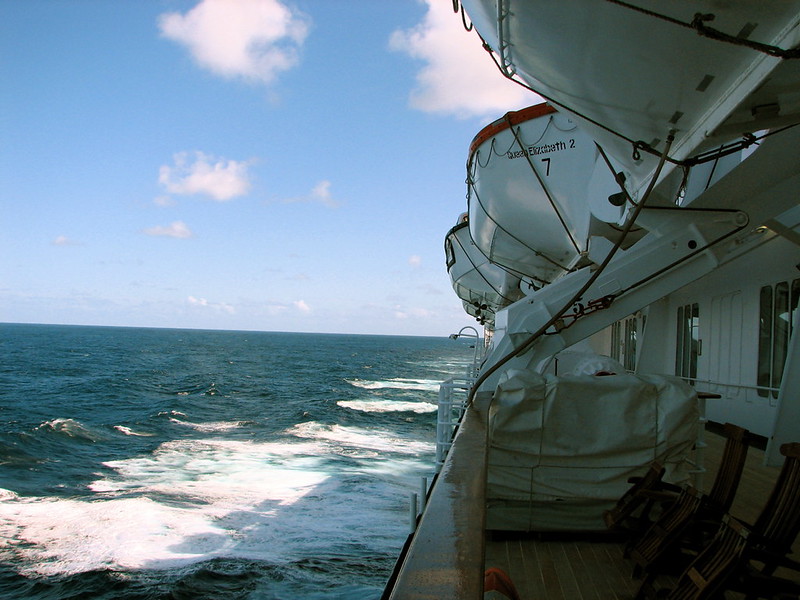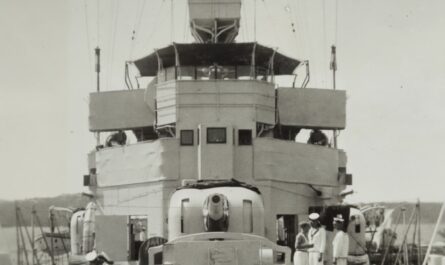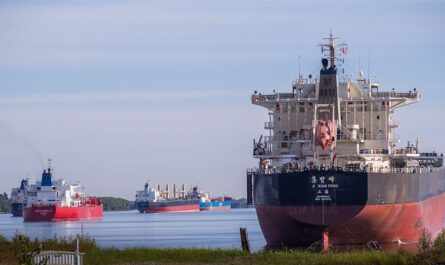The Battle of the Atlantic was the longest continuous military campaign of World War II, lasting from 1939 to 1945. It was a struggle for control over the vital sea lanes that connected the Allied nations. At its core, it was a battle for survival; the outcome determined whether the Allies could maintain the supply lines necessary to sustain their war effort. German U-boats (submarines), under the leadership of the Kriegsmarine, sought to strangle the Allies’ supply chains, while the Allied forces devised innovative strategies to counter this threat.
This article explores the origins, key events, and turning points of the Battle of the Atlantic, highlighting how the Allied forces ultimately triumphed over the formidable German U-boat menace.
Origins of the Battle of the Atlantic
1. The Importance of the Atlantic Ocean
The Atlantic Ocean was the lifeline of the Allied war effort. The United States and Canada supplied Britain with troops, weapons, food, and raw materials crucial for the war. These supplies traversed the Atlantic in convoys of merchant ships, protected by naval escorts.
- Strategic Importance: For Britain, an island nation heavily dependent on imports, maintaining these supply lines was essential for survival and resistance against Axis powers.
2. Germany’s U-Boat Campaign
Germany’s Kriegsmarine recognized the strategic importance of cutting off Britain’s supplies. German U-boats, led by Admiral Karl Dönitz, implemented a strategy known as the tonnage war, aiming to sink more Allied shipping tonnage than could be replaced.
- Wolfpack Tactics: Groups of U-boats, known as “wolfpacks,” coordinated attacks on Allied convoys, overwhelming their defenses.
Early Stages of the Battle (1939–1941)
1. Initial German Successes
At the outbreak of the war, Germany deployed its U-boat fleet to disrupt Allied shipping. Early successes were notable, with U-boats sinking significant numbers of merchant ships.
- The Sinking of the Athenia: On September 3, 1939, the German U-30 sank the British passenger liner SS Athenia, marking the beginning of the battle.
- Lack of Allied Preparedness: Early in the war, the Allies lacked sufficient escort ships and an effective convoy system, leaving merchant ships vulnerable.
2. Technological Disparities
German U-boats initially held a technological edge. Equipped with advanced torpedoes and stealth capabilities, they operated with relative impunity in the vast Atlantic.
- The “Happy Time”: From mid-1940 to early 1941, German U-boats inflicted heavy losses on Allied shipping, sinking hundreds of ships in the North Atlantic.
The Turning Point (1941–1943)
1. Formation of Convoys
To counter the U-boat threat, the Allies implemented a convoy system, grouping merchant ships together under the protection of escort vessels.
- Escort Groups: Destroyers, corvettes, and armed trawlers provided protection, using depth charges and sonar to hunt U-boats.
- Air Support: Long-range aircraft like the PBY Catalina began patrolling the Atlantic, forcing U-boats to submerge and reducing their effectiveness.
2. American Involvement
The United States, though officially neutral until December 1941, began supporting the Allied effort through the Lend-Lease Act, supplying ships and materials. After entering the war, U.S. naval forces significantly bolstered the convoy system.
- The Battle of the Caribbean: German U-boats extended their operations to the Gulf of Mexico and the Caribbean, targeting oil tankers and shipping routes vital to the Allied effort.
3. Technological Innovations
The Allies developed groundbreaking technologies to counter the U-boat threat.
- Radar and Sonar: Advances in radar and sonar allowed escorts to detect and track U-boats more effectively.
- Hedgehog Anti-Submarine Weapon: This forward-throwing weapon allowed escorts to attack submerged U-boats with greater precision.
- Ultra Intelligence: The Allies cracked the German Enigma code, providing critical intelligence on U-boat locations and movements.
4. The Tide Turns
By mid-1943, the Allies began to gain the upper hand. Improved tactics, better coordination, and technological advancements turned the tide against the U-boats.
- The Battle of the Black Pit: The mid-Atlantic gap, a region out of reach of air cover, was a focal point of U-boat activity. The introduction of long-range bombers like the B-24 Liberator closed this gap, drastically reducing U-boat effectiveness.
- Heavy U-Boat Losses: In May 1943 alone, the Allies sank 43 U-boats, marking a turning point in the battle.
The Final Phase (1944–1945)
1. Decline of the U-Boat Campaign
By late 1943, the effectiveness of Germany’s U-boat campaign had diminished significantly. Allied advancements in anti-submarine warfare, coupled with increased production of merchant ships, outpaced U-boat successes.
- Improved Escort Carriers: The deployment of escort carriers provided air cover for convoys across the Atlantic, further neutralizing the U-boat threat.
- Escort Support Groups: Specialized groups of warships aggressively hunted U-boats, attacking them even when convoys were not under immediate threat.
2. Desperate German Measures
In a bid to regain the initiative, Germany introduced advanced U-boats like the Type XXI submarine, capable of operating submerged for longer periods. However, these innovations came too late to alter the course of the war.
3. Allied Victory
By the time of Germany’s surrender in May 1945, the U-boat fleet had been decimated. Of the 1,162 U-boats deployed during the war, nearly 800 were destroyed. The Allies had successfully safeguarded their supply lines, ensuring victory in Europe.
The Human and Material Cost
1. Allied Losses
The Battle of the Atlantic exacted a heavy toll on the Allies.
- Merchant Ships Lost: Over 3,500 merchant ships were sunk, along with approximately 175 warships.
- Human Lives: Tens of thousands of sailors, both military and civilian, lost their lives in the Atlantic.
2. German Losses
Germany’s U-boat arm suffered devastating losses, with over 28,000 U-boat crew members (75% of the total force) killed.
The Legacy of the Battle of the Atlantic
1. Strategic Importance
The Battle of the Atlantic was a decisive factor in the Allied victory during World War II. By maintaining control of the Atlantic, the Allies ensured the continuous flow of troops, weapons, and supplies necessary to sustain the war effort.
2. Technological Advancements
The battle spurred significant advancements in naval technology, including sonar, radar, and anti-submarine weapons. These innovations laid the foundation for modern naval warfare.
3. Lessons in Coordination
The successful coordination between Allied navies, air forces, and intelligence agencies highlighted the importance of joint operations in modern warfare.
4. Commemoration
The sacrifices made during the Battle of the Atlantic are commemorated through memorials, museums, and annual ceremonies. These tributes honor the bravery of those who fought to secure the Atlantic and ensure the survival of the free world.
Conclusion: Triumph Against All Odds
The Battle of the Atlantic was a grueling and complex campaign, fought across vast and unforgiving seas. It was a battle of attrition, strategy, and innovation, where the determination and ingenuity of the Allied forces ultimately prevailed over the formidable German U-boat threat.
The victory in the Atlantic was not just a military triumph but a testament to the resilience and sacrifice of countless individuals. By securing the Atlantic, the Allies laid the groundwork for the liberation of Europe and the eventual defeat of the Axis powers. The lessons learned and the legacy of this battle continue to shape naval strategy and remind us of the enduring importance of perseverance in the face of adversity.



